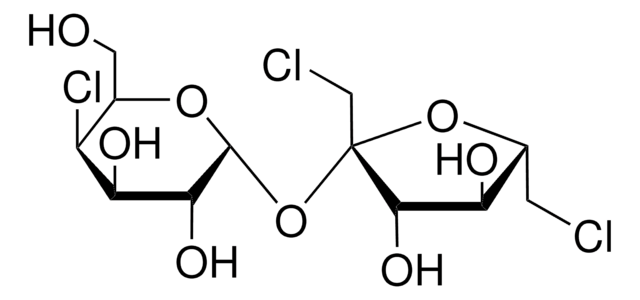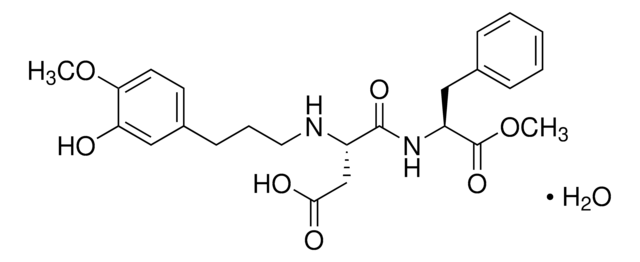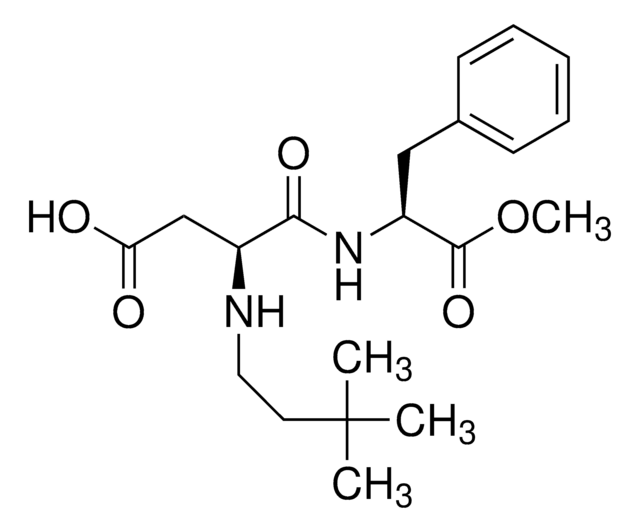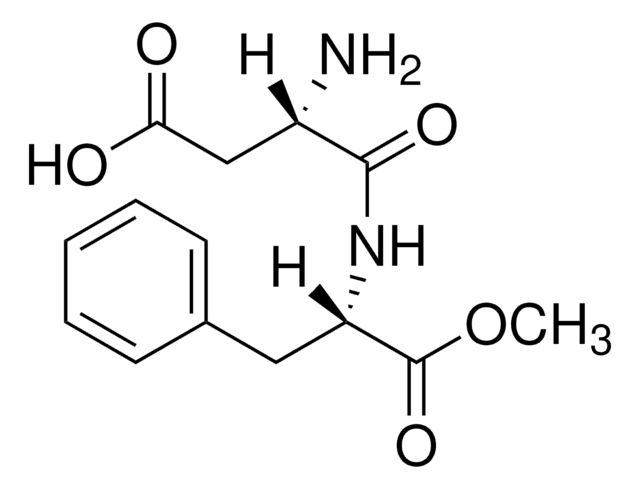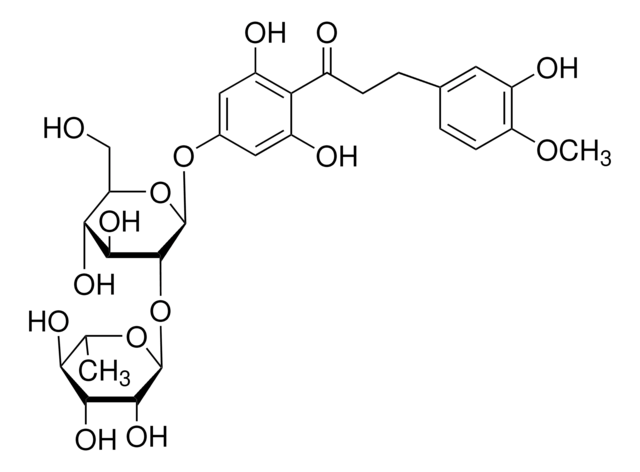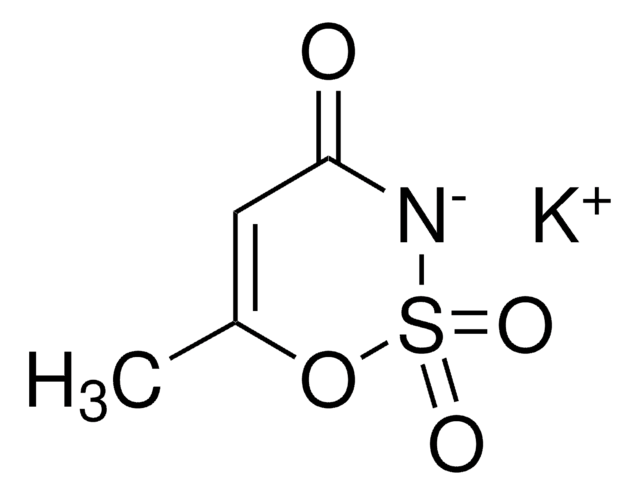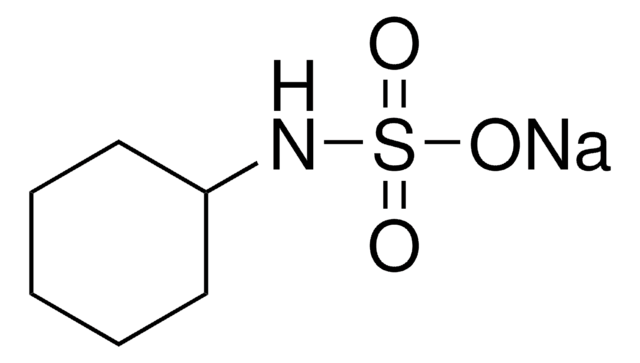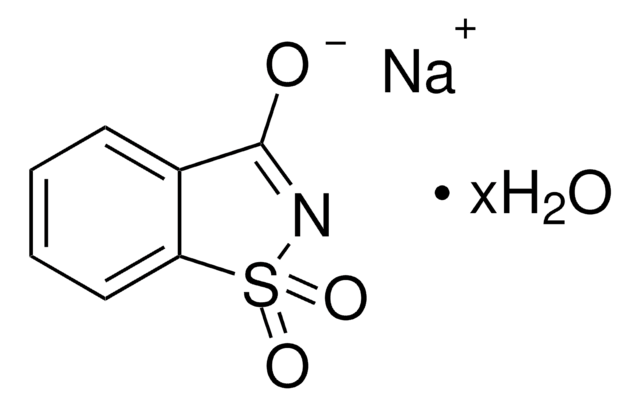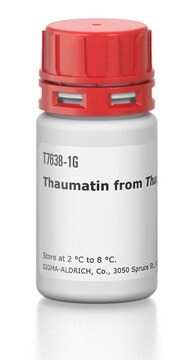49777
Neotame
analytical standard
Sinonimo/i:
N-[N-(3,3-Dimethylbutyl)-L-α-aspartyl]-L-phenylalanine 1-methyl ester
About This Item
Prodotti consigliati
Grado
analytical standard
Livello qualitativo
Saggio
≥98.0% (HPLC)
Attività ottica
[α]/D -41.0±3.0°, c = 0.5 in H2O
Durata
limited shelf life, expiry date on the label
tecniche
HPLC: suitable
gas chromatography (GC): suitable
applicazioni
cleaning products
cosmetics
food and beverages
personal care
Formato
neat
Stringa SMILE
COC(=O)[C@H](Cc1ccccc1)NC(=O)[C@H](CC(O)=O)NCCC(C)(C)C
InChI
1S/C20H30N2O5/c1-20(2,3)10-11-21-15(13-17(23)24)18(25)22-16(19(26)27-4)12-14-8-6-5-7-9-14/h5-9,15-16,21H,10-13H2,1-4H3,(H,22,25)(H,23,24)/t15-,16-/m0/s1
HLIAVLHNDJUHFG-HOTGVXAUSA-N
Cerchi prodotti simili? Visita Guida al confronto tra prodotti
Descrizione generale
Applicazioni
- Wine samples using reversed-phase high-performance liquid chromatography (RP-HPLC).
- Wastewaters using hydrophilic interaction liquid chromatography (HILIC).
- Food samples using high-performance liquid chromatography (HPLC).
Confezionamento
Codice della classe di stoccaggio
11 - Combustible Solids
Classe di pericolosità dell'acqua (WGK)
WGK 3
Punto d’infiammabilità (°F)
Not applicable
Punto d’infiammabilità (°C)
Not applicable
Scegli una delle versioni più recenti:
Possiedi già questo prodotto?
I documenti relativi ai prodotti acquistati recentemente sono disponibili nell’Archivio dei documenti.
I clienti hanno visto anche
Protocolli
RP-Amide and HILIC, both amenable to the analysis of polar compounds, were successfully used to resolve several beverage components, including sugars, vitamins, sweeteners, preservatives, and caffeine.
Il team dei nostri ricercatori vanta grande esperienza in tutte le aree della ricerca quali Life Science, scienza dei materiali, sintesi chimica, cromatografia, discipline analitiche, ecc..
Contatta l'Assistenza Tecnica.
